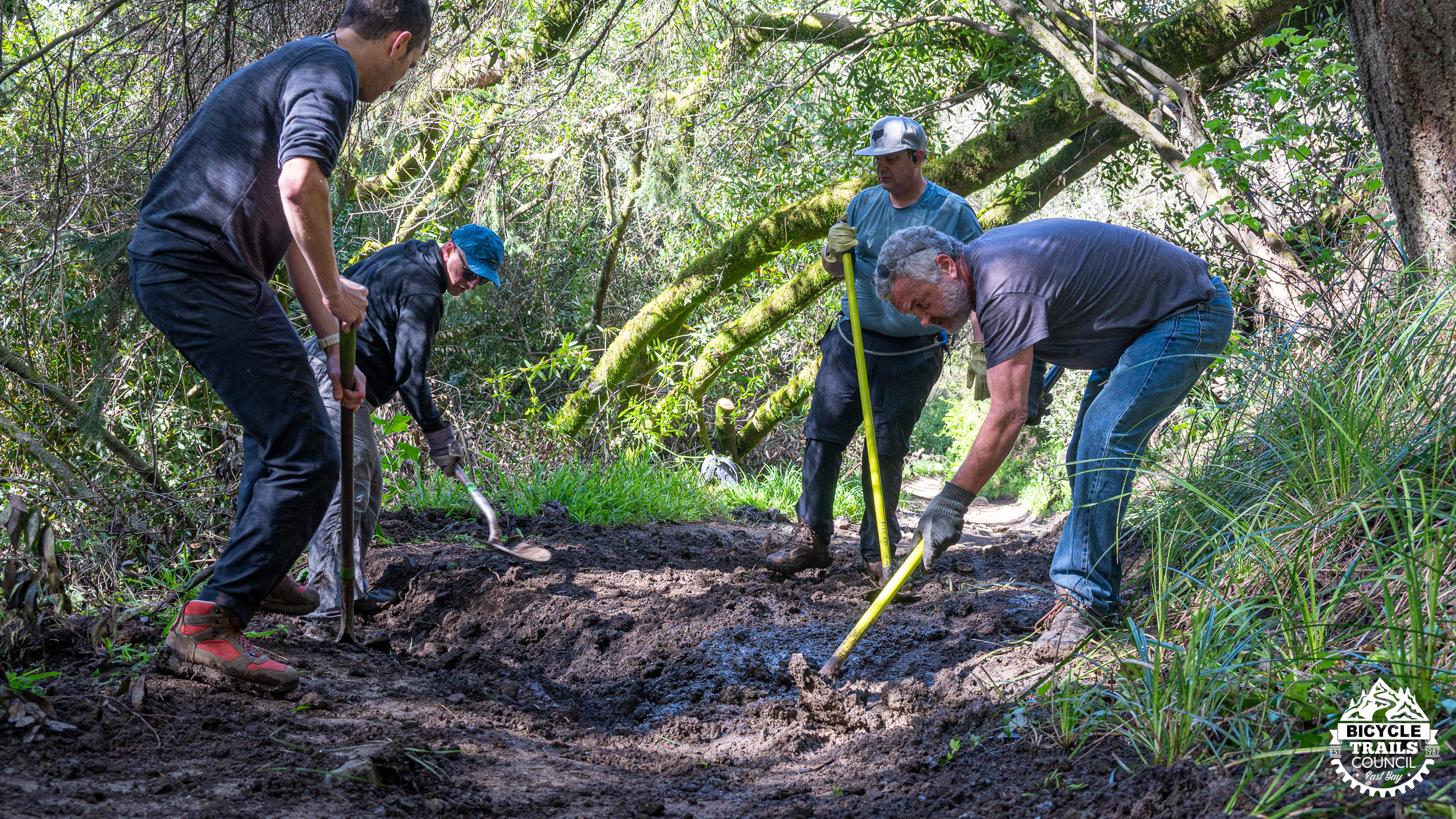by John Roberts

Switchback: “A reverse in direction of the trail grade with a level landing that is used to change elevation on a steep slope and that usually involves special treatment of approaches, barriers, and drainages.” –US Forest Service, Trails Management Handbook.
Think of a switchback as a necessary zigzag delicately built on a steep mountainside. The switchback, known as “Switchie”, magically allows riders to ratchet up the slope via less grade or steepness. For a trail to require such magic, it must be on a steep hill and have no other trail alternatives. Switchie is thereby the trail builder’s last hope! It beats the alternative of cluttered ruts or no trail at all. That is why we should treat all switchbacks with the stature they deserve.
Please educate others on “going long” around Switchie. When I teach riding switchbacks to my children, or new riders, I say “go long”. I reinforce the notion with different phrases. I might say “go wide when entering.” That is to say, turn as much as possible in the opposite direction to pick the widest line. This is the line with the flattest and easiest slope. Or I’ll say, “use all of the real estate,” meaning use the outer perimeter of the turn. For example, if the hairpin turn goes left, steer as far right as you can before entering the left turn. It is “reverse psychology” alright. The trail is easy before the switchback, and only gets hard upon progressing through the turn.

The park users that shortcut switchbacks are likely not trail volunteers. This entering of the “No Ride Zone” in the picture above is the opposite of “going long”. It damages the turn. It also forms a breach for rainwater to plunge down a steeper grade. Consequently, the reckless action then forces much work for the volunteers that are willing to later fix the wrecked switchback. A US Forest Service-poster below asks riders to stay on the trail by going long around the forked tree. Conversely, shortcutting would be the equivalent of one rider heading directly towards the other rider (notice how the slope is steeper this way). Cutting a switchback also impedes vegetation from growing and serving as erosion control. The problem is compounded when BTCEB-placed logs cordoning switchbacks are taken down repeatedly by Switchie saboteurs. These egregious actions are particularly notorious at the bottom of the Cinderella Trail in Joaquin Miller Park.

Surface rainwater is the enemy of trails. It can puddle on flatter trails. Rainwater can also flow along steep trails like a “burst dam” and create a trench by streaming away dirt. Such erosion leaves behind rocks and ruts. Both puddles, and water flow, can contribute to the “elevated root” phenomenon. Although trees favor growing roots underground, root-surrounding dirt under a trail can be splashed or washed away. These roots after time then seem to float above the trail. It is only an illusion after the roots have been slowly uncovered. Although trail builders think of mitigating these risk factors when designing trails, their design is challenged through heavy park use and betrayed through trail misuse.
Switchbacks are delicately placed where erosion is at a heightened risk. Ignorant park users may think cutting a switchback can cut an infinitesimal amount of time, or maybe pass a slower or stopped hiker. The reality is that nothing can be more unnecessary, or disingenuous. The action is contemptuous to the trail designer, as well as those who fought to keep the trail open. Cutting switchbacks invites surface rainwater to adversely affect trails by removing soil, thereby leaving only rocks, elevated roots, and ruts. This can put the viability of the trail itself in jeopardy.
Taking the long way around a switchback shows discipline, provides flow, and allows trail sustainability as the original designers envisioned. Going the long way around the switchback is also easier. It keeps the trail path tight with the least amount of grade so that rainwater damage is minimized. Bicycle riders have a limited amount of multi-use trails in the East Bay. We all share the singletrack with many park user types, both human and not. So please, spread the word that it pays to be kind to Switchie.



